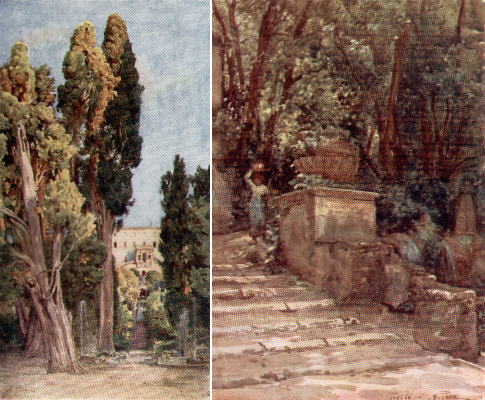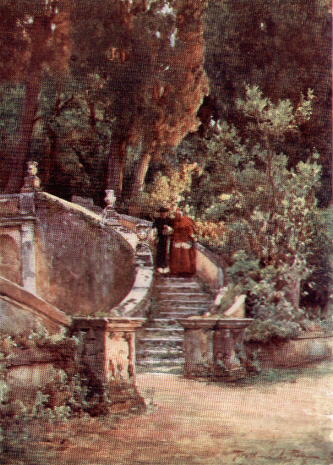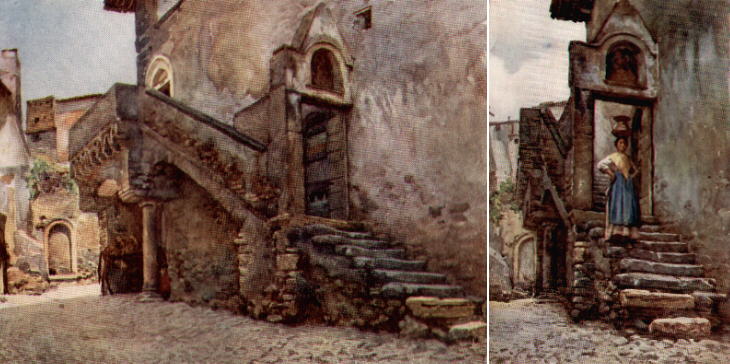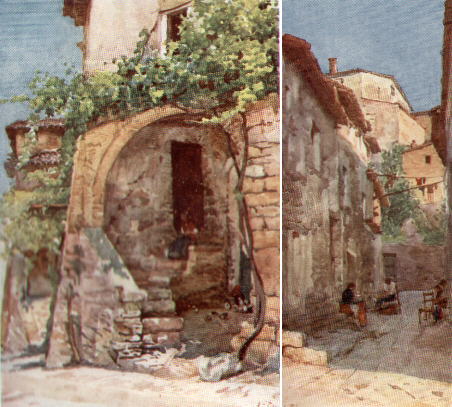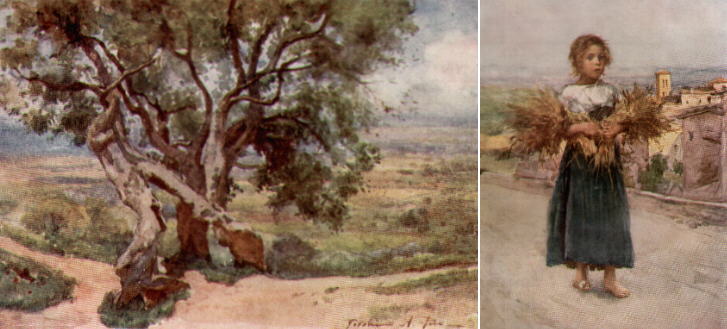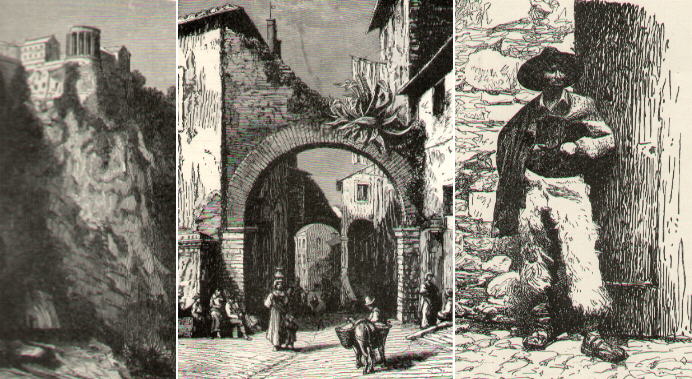  seen by a 1905 armchair traveller Tivoli
Black's Beautiful Books is the name of a series of illustrated books published at the beginning of the
XXth century by A. and C. Black, 4, 5 and 6 Soho Square, London W. The price of the books ranged from 5s. to 20s.
The 20s series (size 9x61/2 ins.) were embellished with full-page illustrations,
which at the time were reserved only to very expensive books.
The etchings of Giovanni Battista Piranesi were widely known in Britain and Alberto Pisa chose to illustrate Villa D'Este with a view which has many points in common with an etching by Piranesi (which you can see with other views of the Villa by clicking here). He highlighted the centenarian cypresses in the lower part of the gardens. Villa d'Este is known for its many fountains and there is water everywhere in the gardens: nevertheless, Pisa painted a woman carrying water on her head; he was aware that the reader of the book was interested in seeing a picturesque image of Italy and would not have queried its likelihood.
Another way to give a Roman flavour to an image was to portray in it a member of the clergy. In this illustration of Villa d'Este, Pisa portrayed a cardinal walking in the gardens with a priest. The red dress of the cardinal is the focal point of the painting.
Tivoli retains many medieval buildings near Porta del Colle. Pisa was impressed by a medieval house with an elegant staircase built upon an ancient column and he painted it in two illustrations: in the second one we see again a woman carrying water. You can see this building in a page on medieval Tivoli.
Many writers had described to the British public the pleasures and the discomforts of a summer in one of the many little towns near Rome and this explains why Pisa dedicated several illustrations (above and below) to the countryside near Tivoli. Anticoli Corrado, notwithstanding its being a very small town without buildings of interest, was known because most of the models who offered their services on the Spanish Steps came from here (you can read an amusing account about these models by Charles Dickens or take a walk in Anticoli).
Many other illustrated books showed Rome to the British public: in 1903 a glossy book was published in London by William Glaisher 265, High Holborn. It was the English translation of a French book by Francis Wey, Rome, its Churches, Monuments, Art, and Antiquities. It had about 280 illustrations, to a large extent sketches by Henri Regnault, a young French painter who had died in 1871 during the Franco-Prussian War. So the illustrations portrayed costumes and a way of living which in 1903 had been largely modified by the effects of progress and of the unification of Italy, but clearly the public liked these picturesque images.
Wey's book had some views of Tivoli which included its ancient Roman temples (click here to see Roman Tivoli). Other pages of this section: Roman Forum, Roma Sparita (lost), Interiors of Churches and Subiaco. |
All images © 1999 - 2004 by Roberto Piperno. Write to romapip@quipo.it
